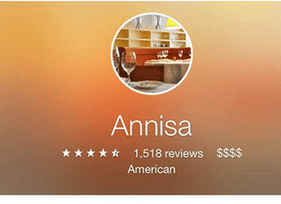Search engine optimization relies heavily on site-wide navigational elements to broadcast authority signals to the search engines. Pages linked in the header, footer, and side navigation elements that appear on every page of the site play a huge role in determining which pages on your site will have the visibility to rank strongly for competitive search phrases.
What Is Link Authority?
It all starts with the concept of link authority, or “link juice” as you’ll often hear SEOs refer to it flippantly. Years ago it started with Google’s PageRank algorithm that likened links between sites to scientific citations — a link is like a validation that the previous work done (the web page linked to) is valuable enough to cite as a source (create a link to it.) But today, link authority has moved beyond PageRank in ways that are difficult to explain.

Life-giving “link juice” in the desert of the search engine results.
Instead, think of your site’s link authority tall glass of delicious, life-giving juice in the competitive desert of search engine ranking results.
The vast majority of that juice will usually be pooled at the home page, because most people will just link there. If you offer an extraordinary tool or product line, it can occasionally acquire more juice than the home page, but it’s rare.
You need to funnel that life-giving link juice from the home page to the pages that are most likely to rank most strongly for the phrases for which your prospects are most likely to search. This link juice acts as a signal to the search engines that the juiciest pages are the most important on the site — they have the most authority — and should therefore in the opinion of the site’s owners be ranked the highest.
Naturally, link juice coming from other sites acts as a much stronger signal, but this concept works when we’re considering how to share the juice a site already has between its individual pages to influence authority.
Check your keyword research, or use the Google Keyword Planner to conduct keyword research. Nearly always, categories of products drive more search demand than individual products themselves. More people search for “work boots” as a category than search for the individual product “Timberland PRO 6″ Pit Boss Steel Toe Boot.”
To drive the most customers to your site to purchase product, you need to pour that life-giving link juice into your highest-level category pages and the subcategories underneath them. You pour the juice by linking to those pages via your site-wide navigational elements. Links are link juice conduits.
How Header Navigation Impacts SEO
If you want to rank for a high-level, broad phrase, your best bet is to include it in your header navigation. Inclusion in the other site-wide navigational elements like the footer or your right-left navigation will also work if they are present on every page and if they are the same on every page.

Macy’s header navigation is the same on every page. Their left navigation is specific to the department or category.
For example, Macy’s uses a mega-navigation concept (shown in the image above on the left side) to include links to departments and categories. The mega-nav links are visible only when the customer rolls over the header. When the search engine crawlers visit the site they can crawl and index all of the pages in that mega-nav.
Because Macy’s header links to so many categories in its mega-nav, all of those categories are receiving a share of link juice. And because that header is the same across every page of the site — not just on the home page but from every page of the site — every page on the entire site is sharing whatever small measure of link juice it has with these category pages as well. That’s fantastically powerful for SEO.
Through its header, Macy’s is telling search engines, “These are the most important pages on my site, the pages I want to be most visible for.”
By contrast, the left navigation (shown in the image above on the right side) contains links specific only to the category, or filtered product set that the customer has navigated to. The links found in the left navigation has local link juice power. Links in the left hand category navigation share the link juice that those less juicy pages have with each other. But they do not get a share of the link juice from other departments or from the homepage.
Only links in the site-wide navigational elements — like the header — benefit from whole-site link juice infusions.
Other Navigational Considerations
In addition to which pages will be linked to — a huge decision in itself because it overlaps with other disciplines like user experience, creative, and development — other factors influence the ability to gain the full SEO benefit of a site’s navigation.
A page has to exist before it can be included in the navigation. If you want to rank for “shampoo” but your site only has pages for “women’s shampoo,” “men’s shampoo,” and “kids’ shampoo,” your site has an architectural conflict with SEO needs. I address this in detail in “SEO: Impact of Ecommerce Catalog Structure.”
The actual names of the department, category, and other pages on the site have a surprising amount of influence on the relevance signals your site sends as well. I go through this in detail at “SEO Depends on Page Names.”





